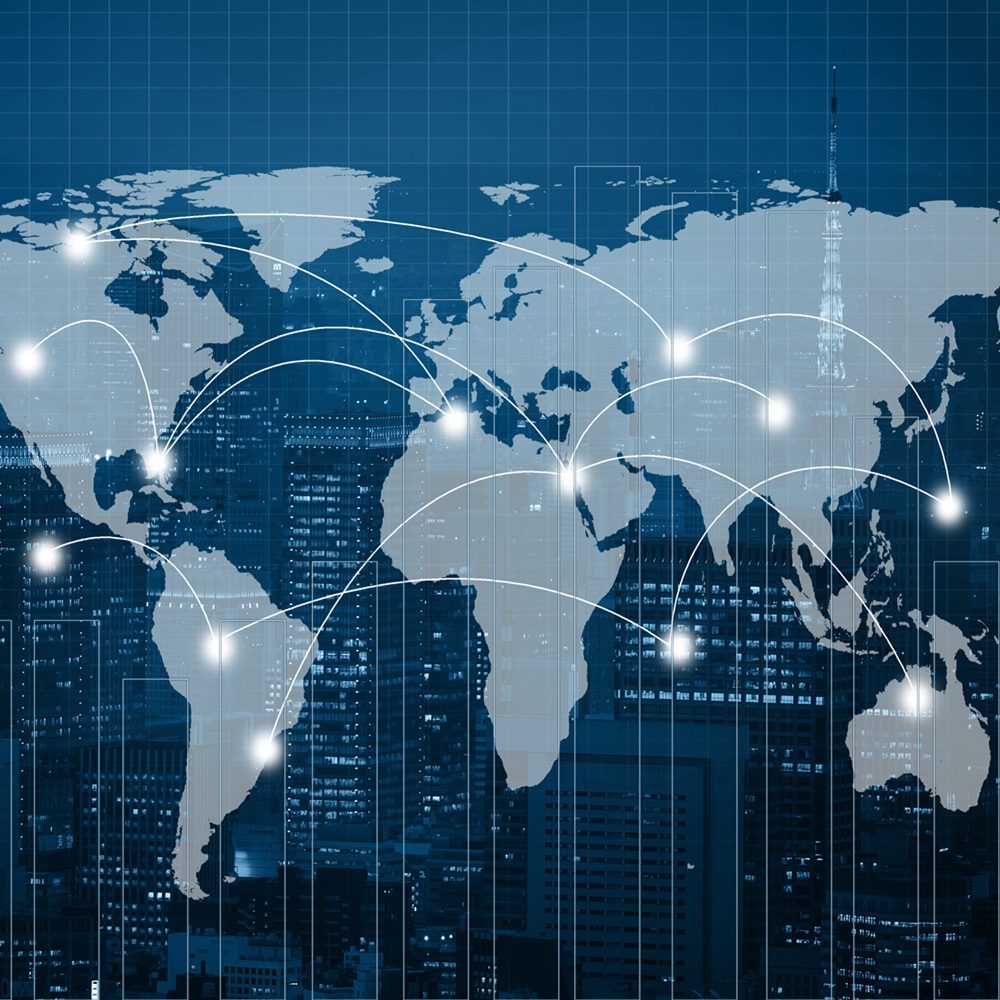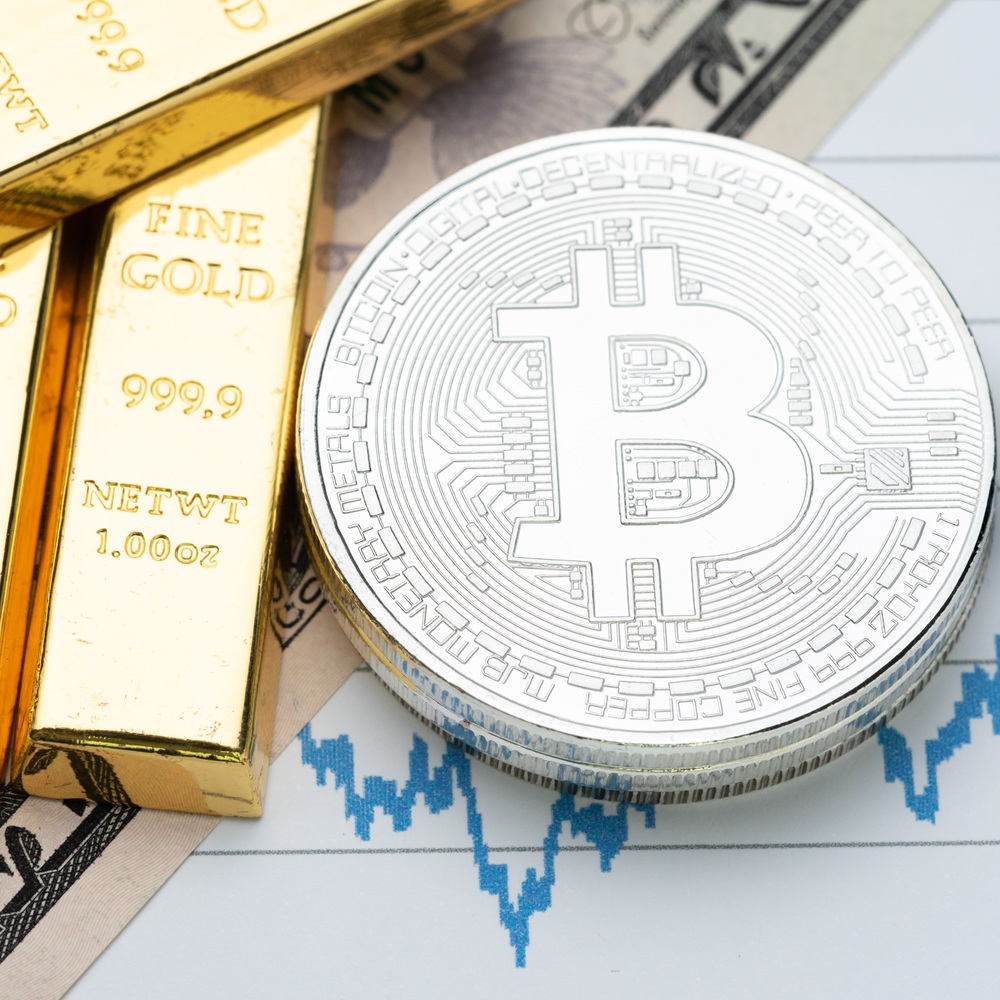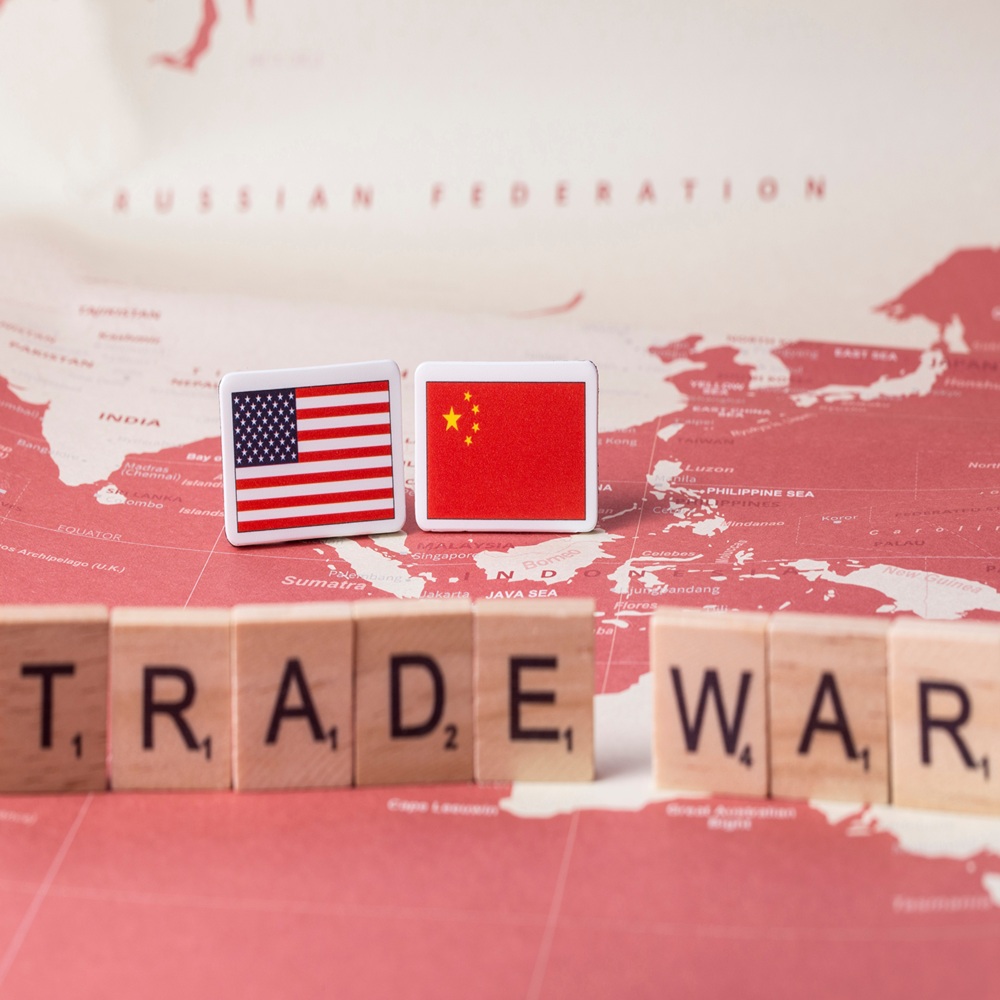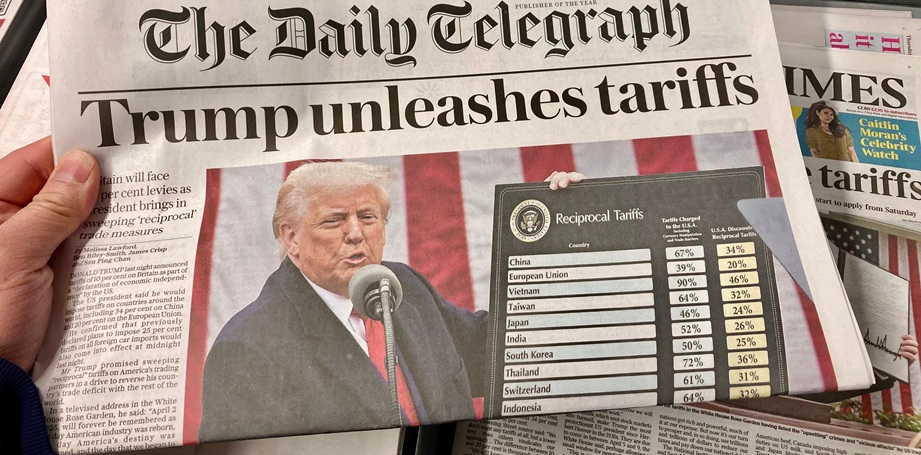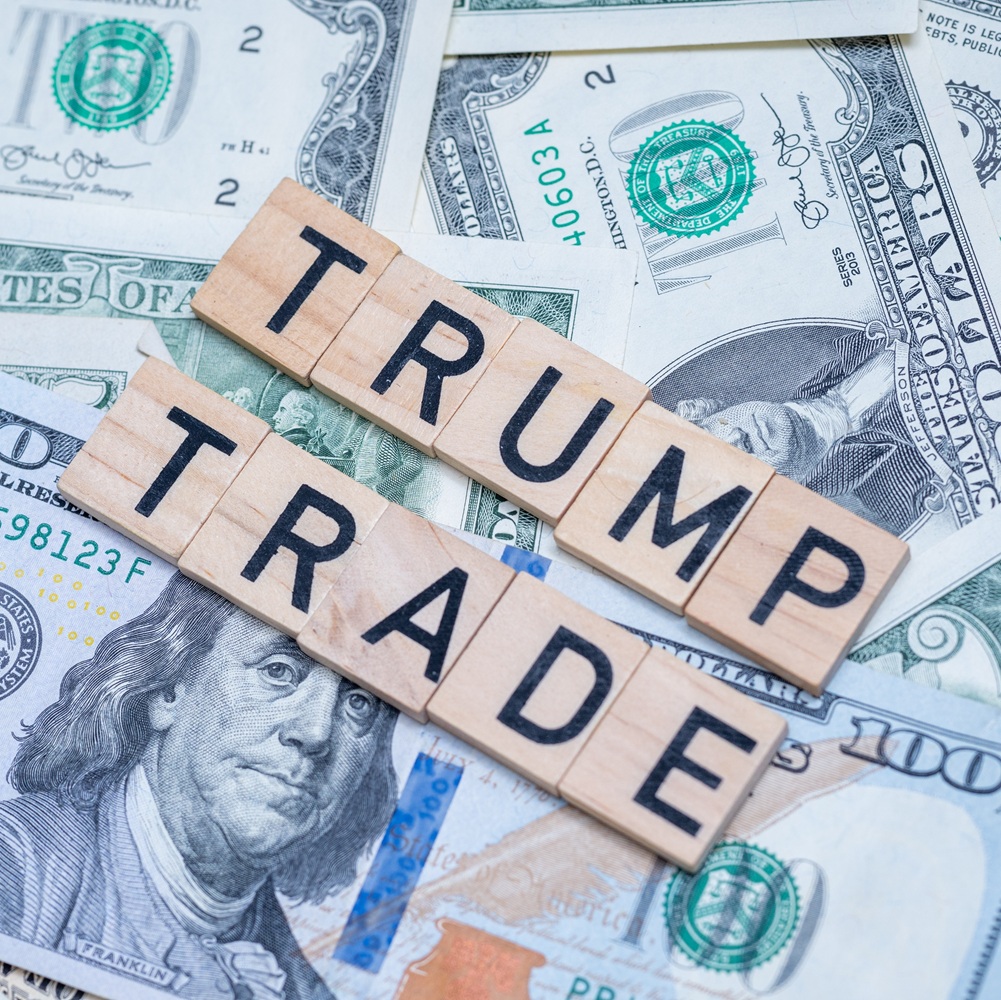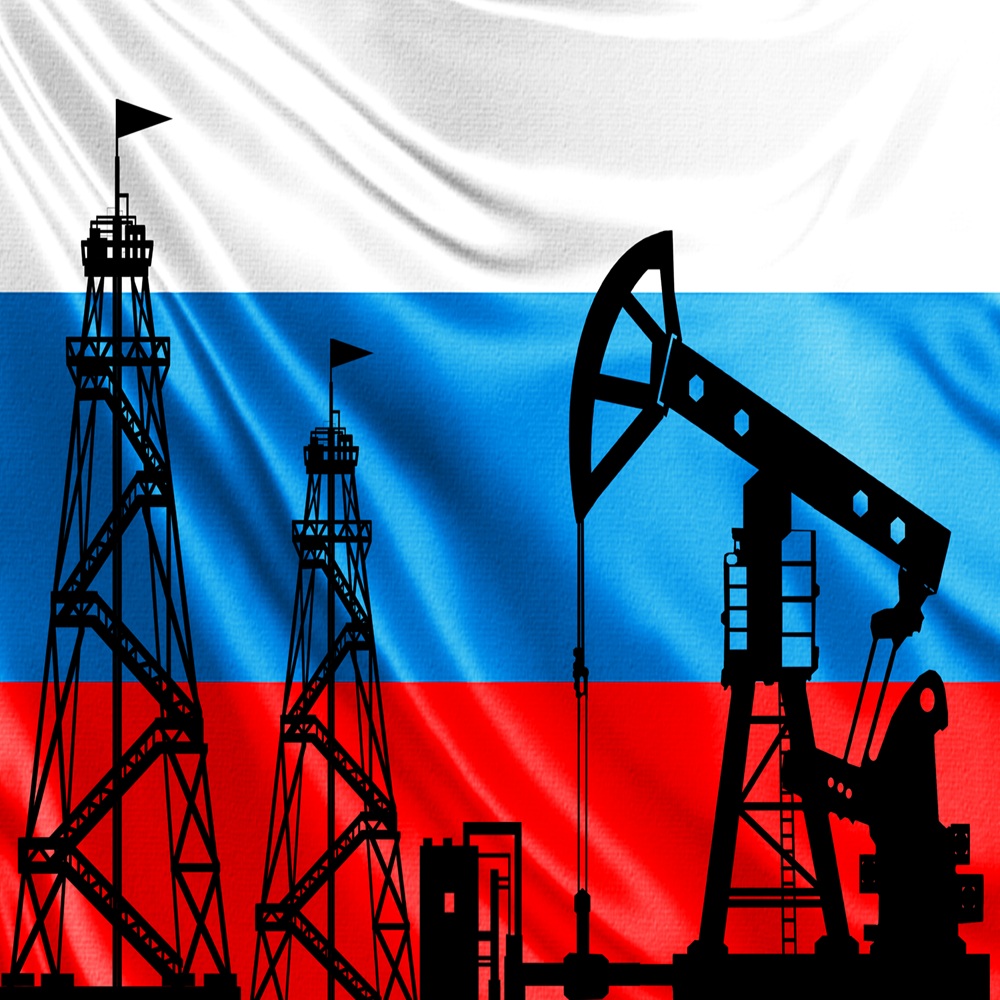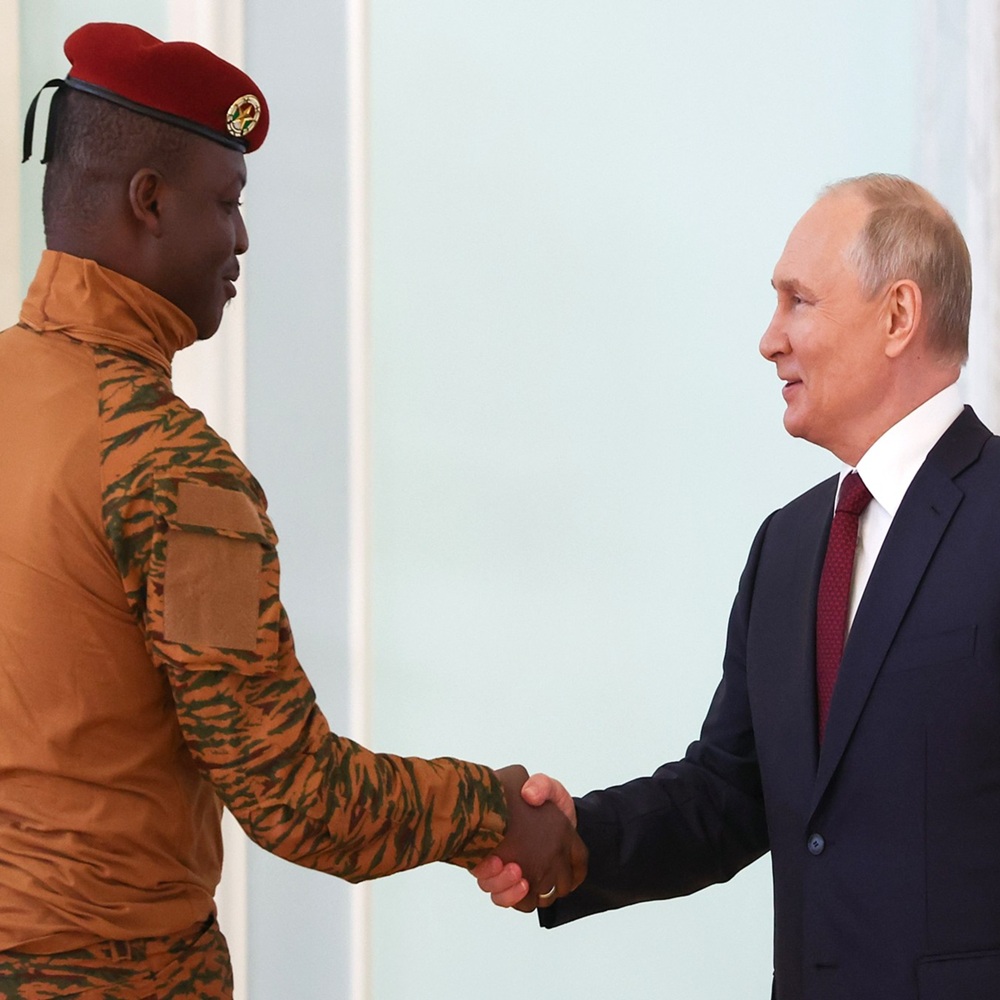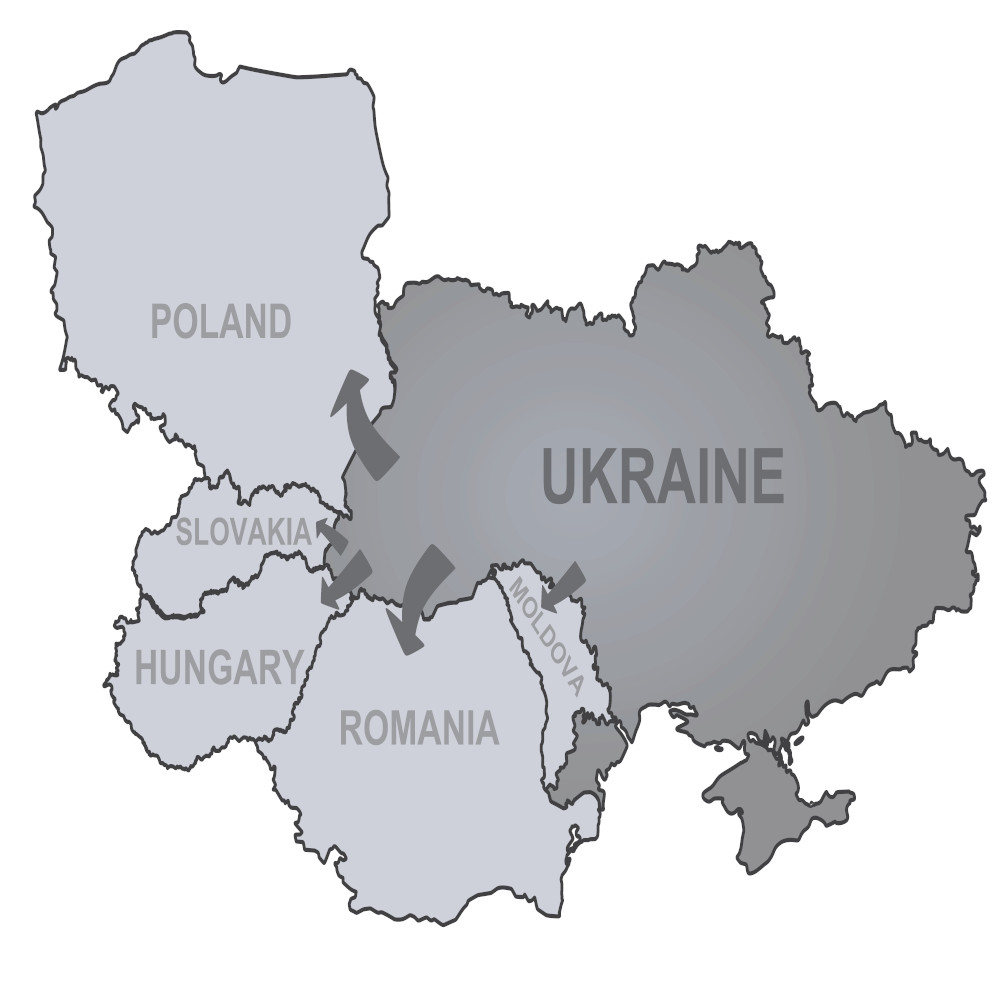
The Economic impacts of the Ukraine war on Eastern European countries with a focus on inflation and GDP growth
by World & New World Journal Policy Team
I. Introduction Russia invaded Ukraine in February 2022. As the Russian invasion of Ukraine enters its fourth year, its most immediate and visible consequences have been loss of life and large numbers of refugees from Ukraine. However, given the interconnected structure of the international political, economic, and policy systems, the ramifications of the Ukraine conflict can be felt well beyond Ukraine and Russia. Much of the recent literature and commentaries have focused on the military and strategic lessons learned from the on-going Ukraine conflict (Biddle 2022; 2023; Dijkstra et al. 2023). However, there are not many quality analyses of economic effects of the Ukraine war on Eastern European countries, including Russia and Ukraine. This paper focuses on the economic effects of the Ukraine war on nine Eastern European countries, including Russia and Ukraine. This is because although Eastern European countries are neighbors of Russia and Ukraine and have had significant negative economic outcomes from the Ukraine war, these countries were mainly ignored by researchers. II. The Economic Effects of the Ukraine war The impacts of war are far-reaching and devastating. War causes immense destruction of property and loss of life. It also creates psychological trauma for those who have experienced it firsthand. War can also have long-term economic impacts, such as higher unemployment and increased poverty. War can also lead to the displacement of people, as we have seen the millions of refugees who had been forced to flee their homes due to conflicts. War can also have political effects, such as creating new states or weakening existing nations. It can also lead to the rise of authoritarian regimes in many post-war nations. War can also lead to increased militarization as nations seek to protect themselves from future conflicts. The Ukraine war might have broader economic consequences. The supply chains may be affected because of the destruction of infrastructures and resources. War mobilization may affect the workforce and economic production. Actors in the economy may also act strategically to deploy resources elsewhere or to support the war effort because the war has affected incentive structures of workers and business. These effects can be local to geographical areas engulfed in conflict but also cause ripple effects to a wider regional area and to the global economy. Trade, production, consumption, inflation, growth and employment patterns may all be influenced. Peterson .K. Ozili.(2022) claimed that the scale of the Ukraine war had its negative impact on the economies of almost all countries around the world. According to Ozili, the main effects of the Ukraine war on the global economy are several, but this paper focuses on two below: Rising Oil Gas Prices and inflation – European countries import a quarter of their oil and 40% of their natural gas from the Russian Federation. The Russian Federation is the second largest oil producer in the world and the largest supplier of natural gas to Europe, and after the invasion, European oil companies will have problems getting these resources from the Russian Federation. Even before the Russian invasion, oil prices were rising because of growing tensions between countries, the COVID-19 pandemic, and other factors, but remained in the $80–95 per barrel range. After the invasion, this price reached the value of $100. Natural gas prices rose 20% since the war began. Rising gas & oil prices can drive high inflation and increase public utility bills. Decline in production and economic growth. Rising oil and gas prices lead to high inflation and, therefore, a decline in consumption, supply and demand, thereby causing decline in growth and production. This paper focuses on inflation and GDP growth of nine Eastern European countries regarding the economic effects of the Ukraine war. Ozili (2022) claimed that very high inflation was a perceived negative consequence of the Russian invasion of Ukraine. As Figure 1 shows, inflation in the EU jumped in the first month of the invasion, and the increasing trend continues. EU inflation in 2022 peaked in October and amounted to 11.5% that was a historical record. However, inflation has slowly declined as energy prices have gone down. This higher inflation in Europe basically resulted from energy price increase. As Figures 2, 3, and 4 show, energy prices in Europe skyrocketed in 2022. As Figure 2 shows, energy prices have been the most important component of high inflation in the EU. Figure 1: Average inflation rate in the EU (%). Source: EurostatCreated with Datawrapper Figure 2: Main components of inflation rate in the Euro areas. Figure 3: Natural gas prices in Europe, January 2021- end 2024 Figure 4: Crude oil price, January 2020-January 2025 Source: Eurostat Created with Datawrapper Inflation skyrocketed not only in the EU member countries, including Eastern European countries, but also in Russia and Ukraine. Figure 5: Inflation rate in Russia, 2021-2025 As Figure 5 shows, inflation rate in Russia averaged 8.16 % from 2003 until 2025, but it reached an all time high of 20.37 % in April of 2022 just after the Russian invasion of Ukraine. In 2022, Russia experienced high inflation, with the average annual rate reaching approximately 13.75%. This surge in inflation was largely attributed to the economic impact of Western sanctions and increased government spending related to the war in Ukraine. From end of 2022 and throughout 2023, however, inflation was brought under control, but in 2024 inflation started to climb again. The inflation rate in Russia has been moderately high in 2024 and 2025, reaching to 9.5% in 2024 and 9.9% in May 2025 and 9.4% in June 2025. Figure 6: Inflation rate in Ukraine, 2021-2025 The Ukrainian economy has undergone harsh conditions with the onset of Russia’s full-scale invasion of Ukraine in 2022. Following the start of the invasion, inflation skyrocketed to 26.6% in October 2022 from 10.0% in 2021. Inflation in Ukraine started to slow down from the end of 2022 throughout 2023, reaching 5.1% in November 2023. However, inflation began to rise from early 2024 and then grew to 12% in December 2024. As Figure 5 & 6 shows, inflation rates in Russia and Ukraine do not follow the pattern of EU countries in which inflation skyrocketed in 2022 and then has slowly declined over time. Rather inflation in Russia and Ukraine skyrocketed in 2022 and then slowed down in 2023 and started to climb again in 2024 and 2025. As Figure 7 shows, inflation in Eastern European countries has been also very high just after Russia invaded Ukraine. Hungary’s annual inflation rate surged in 2022, reaching a peak of 26.2 % in January 2023. By mid-2023, it began to decline, and by 2024, it showed a gradual decline trend, reaching 3.7 % in 2024. And inflation in Hungary slightly increased in 2025, reaching 4.6% in June 2025 and 4.4% in May 2025. The Czech Republic(Czechia) experienced a significant surge in inflation in 2022, with the average inflation rate reaching 15.1%. This marked the second-highest inflation rate since the Czech Republic’s independence in 1993. Two factors mainly contributed to this surge: High energy prices:The global energy crisis, exacerbated by the war in Ukraine, significantly impacted energy prices in the Czech Republic. Increased food prices: The rising energy costs also led to higher food prices, with some sectors experiencing inflation rates as high as 26%. The inflation rate in the Czech Republic in 2023 was relatively high, reaching 10.7%. However, inflation significantly declined in 2024 and 2025. The average annual inflation rate in the Czech Republic for 2024 was 2.4%. The inflation rate in 2025 was also low, recording 2.7% in July 2025. Poland also experienced a significant increase in inflation in 2022, with the average inflation rate reaching 14.2%. The inflation was down to 11.47% in 2023, but it was still high. The rate continued to fall, reaching 3.72% in 2024. In July 2025, inflation dropped to 3.1%. Similarly, Bulgaria experienced a significant surge in inflation in 2022, reaching a peak of 18.7 % in September 2022. However, Bulgaria’s annual inflation rate continued to decline from 13.02% in 2022 to 8.6% in 2023 and 2.6% in 2024. The inflation in June 2025 was 3.1%. Romania experienced a significant surge in inflation in 2022, reaching a peak of 14.6 in November 2022. However, the annual inflation rate in Romania declined from 13.8% in 2022, recording 10.4% in 2023 and 5.58% in 2024. The inflation rate reached a more moderate rate of 5.8% in June 2025. Slovakia experienced a significant surge in inflation in 2022, reaching a peak of 15.4 % in November 2022. However, the annual inflation rate in Slovakia declined to 10.96% in 2023, and 3.15% in 2024. The inflation rate in Slovakia reached a more moderate rate of 4.3% in June 2025. Slovenia had much lower inflation rate than other Eastern European countries. The annual inflation rate in Slovenia was 8.83% in 2022, 7.45% in 2023, and 1.97% in 2024. The inflation rate in Slovenia reached a relatively low rate of 2.2% in June 2025. Unlike Russia and Ukraine, these Eastern European countries followed the pattern of EU countries in which inflation skyrocketed in 2022 and then has slowly declined over time. Figure 7: Inflation rate in Eastern Europe during the Ukraine war Very high inflation in Europe during the early stage of Ukraine war basically resulted from energy price increase as Figures 2, 3, and 4 show. It is because European countries were heavily dependent on Russian energy. Figure 8 shows that a number of Eastern European countries were significantly dependent on Russian energy in 2020 before the Ukraine war. For example, Slovakia and Hungary depended on Russia for more than 50 % of their energy use. Moreover, Europe was the largest importer of natural gas in the world. Russia provided roughly 40% and 25% of EU’s imported gas and oil before the Russian invasion of Ukraine. As Figure 9 shows, major gas importers from Russia in 2021 were European countries. Figure 8: EU member country’s dependence on Russia energy Figure 9: Major EU importers from Russian Gas in 2021. However, since the Russian invasion of Ukraine in 2022, more than 9,119 new economic sanctions have been imposed on Russia, making it the most sanctioned country in the world. At least 46 countries or territories, including all 27 EU nations, have imposed sanctions on Russia. EU trade with Russia has been strongly affected by the sanctions, resulting in a 58% decline in exports to Russia and an 86% drop in imports from Russia between the first quarter of 2022 and the third quarter of 2024. In the response, as Figure 10 shows, Russia cut its gas exports to the EU by around 80% since the Russian invasion, resulting in higher gas price in Europe. Figure 10: Monthly Russia-EU pipeline gas flows, 2022-2025 Nonetheless, Figure 11 show that Hungary, Slovakia, and Czech Republic have been major importers of Russian gas and oil after Russia’s invasion of Ukraine, while Figure 12 shows that Hungary, Bulgaria, Slovenia, Slovakia, and Czech Republic have been major importers and consumers of Russian gas after the Ukraine war. Figure 11: Largest importers of Russian fossil fuels (January 1, 2023 to February 16, 2025) Figure 12: Selected European countries’ imports of Russian natural gas as shares of total consumption. As energy prices in Europe skyrocketed, inflation, including food price also skyrocketed in Europe. As a result, consumption in Europe was down and GDP growth declined in Europe after the Russian invasion of Ukraine. As Ozili claimed, lower growth rate was also a perceived negative consequence of the Russian invasion of Ukraine. As Figure 13 shows, GDP in EU was down to 3.5 % in 2022 compared to 6.3% in 2021, and it was further down to 0.8 % in 2023 because of economic stagnation and high inflation caused by the Ukraine war. Figure 13: Average annual GDP growth rate in EU, 1996-2025. Like EU countries, Russia, Ukraine and some Eastern European countries experienced negative growth rates in 2022 & 2023 after Russia’s invasion of Ukraine in February 2022. Russia’s economy has undergone significant transformation since its full-scale invasion of Ukraine in February 2022. As Figure 14 shows, Russia GDP growth rate for 2022 was -2.07%, a 7.68% decline from 2021. This decline in GDP was due to international sanctions, the withdrawal of foreign companies and overall economic uncertainty. However, the impact was largely offset by a favourable terms-of-trade from higher commodity prices and support from third countries – especially China, Turkey, the UAE and countries bordering Russia – which have served as conduits for sanctions evasion. Figure 14: Russia GDP Growth Rate By 2023, the Russian economy had increasingly shifted to a war footing. As Figure 15 shows, military spending significantly increased after the Russian invasion of Ukraine. Surge in government spending such as military spending, counter-sanctions measures and credit growth boosted investment, construction and overall economic activity in Russia. The military-industrial sector benefitted the most, as did private consumption driven by war-related payments and high real wage growth resulting from the tight labor market. Meanwhile, sectors reliant on Western markets or foreign companies continued to struggle. As a result, Russia’s GDP grew by 3.6 percent in 2023 and 4.3 percent in 2024. Economic expansion resulted from rising government expenditure and investment in its military as it continues its war against Ukraine. Figure 15: Russia military spending By the end of 2024 and in early 2025, however, signs of economic stagnation had become evident. Even the military-industrial sector began to stagnate. The economy had butted up against its supply-side constraints. In the first quarter of 2025, annual growth slowed to an estimated 1.4 % (from 4.5 % in the last quarter of 2024. Economic contraction was driven by falling activity in trade, mining, real estate and leisure, which growth in agriculture, manufacturing and public administration were not able to offset. Figure 16: Ukraine GDP growth rate Russian invasion of Ukraine in February 2022 significantly affected Ukraine economy. As Figure 16 shows, Ukraine’s GDP growth rate for 2022 was -28.76%, a 32.08% decline from 2021. GDP growth rate in Ukraine averaged 1.33% from 2000 until 2025, reaching a record low of -36.60 % in the second quarter of 2022. Ukraine’s economy started to bounce back in 2023 and the GDP growth rate in Ukraine for 2023 was 5.32 %, a 34.08 increase in 2022. GDP growth rate reached an all time high of 19.30% in the second quarter of 2023. The GDP growth for 2024 was down to 2.9%. In the first quarter of 2025, Ukraine’s GDP grew 0.9%. However, the Ukrainian economy has been propped up by financial support from Western countries, including military and humanitarian aid, as well as loans from frozen Russian assets. Financing from abroad has been essential in sustaining Ukraine’s ability to survive. Ukraine’s 2024 public sector deficit rose to a record 1.832 trillion hryvnia, or almost 24 % of GDP. Over 60 % of spending went to defense and domestic security. Ukraine’s foreign partner countries provided approximately $42 billion in direct budget support in 2024, of which a large chunk ($17.5 billion) was provided via the EU’s Ukraine Facility. In 2025, Ukraine’s financing situation looks brighter compared to the beginning of 2024, when the EU’s 50-billion-euro Ukraine Facility and America’s over-60-million-dollar Ukraine aid package were blocked due to legislative intransigence. The structure of 2025 deficit financing in Ukraine represents a big change from 2024 as a substantial part of the deficit will be covered out of the yield on Russia’s frozen assets. Last summer, G-7 leaders agreed on an Extraordinary Revenue Acceleration (ERA) arrangement allowing for the use of 183 billion Euro of frozen Russian assets (end-2024) in the EU area to help Ukraine. The ERA program does not draw on the Russian assets directly but uses its proceeds to finance payments and costs of a $50 billion loan. As Figure 17 shows, ERA disbursements allocated to Ukraine will come to nearly $22 billion in 2025 and $11 billion in 2026. The new Trump administration has yet to withdraw from the ERA program, even if substantial cuts have already been made in e.g. USAID financing to Ukraine. The US remains the ERA program’s largest supporter, accounting for a total disbursement commitment of $20 billion. Figure 17: ERA program for Ukraine from Western countries, 2023-2026 Moreover, according to the Ukraine Support Tracker from Kiel University, Ukraine has received 267 billion euros in aid over the past three years. Half of this has been in weapons and military assistance, with 118 billion euros in financial support and 19 billion euros for humanitarian aid. European countries contributed more than the US: 62 billion euros in arms and 70 billion euros in other aid from Europe, compared with 64 billion euros in arms and 50 billion euros in other aid from the US. On the other hand, the Ukraine war caused a massive refugee crisis to Eastern European countries. The Ukraine war made millions of Ukraine people cross the border into neighboring countries in Eastern countries, affecting the economy of each nation. Table 1 shows the number of Ukraine refugees settled in Europe. Most of the Ukraine refugees settled in Poland and the Czech Republic, followed by Romania, Slovakia, and Moldova. These Ukraine refugees had significant impacts on Eastern European economy, in particular on Poland and Czech Republic. Table 1: Number of refugees from Ukraine settled in EuropeSource: UNHCR Operational Data The Ukraine war affected Poland’s economy in several ways, creating both difficulties and opportunities. First, there were problems with energy supplies that could threaten Poland’s access to power. The conflict in Ukraine has shaken up Poland’s energy market quite a bit, affecting its gas and oil supplies and leading to a spike in prices. Right after the conflict began, gasoline prices in Poland jumped by more than 40% as Figure 18 shows. This is mainly because Poland used to get a lot of its energy from Russia, and now, because of the Ukraine war and the sanctions that followed, there’s been a big disruption. As Figure 19 shows, food prices also skyrocketed just after the Ukraine war. Figure 18: Gasoline price in Poland Figure 19: Food inflation in Poland Food inflation in Poland averaged 4.11 % from 1999 until 2025, reaching an all time high of 24.00 % in February of 2023. Moreover, there has been the arrival of more than 1 million Ukraine refugees, which put pressure on jobs and public services in Poland. The Polish government has had to increase its public spending significantly to provide housing, healthcare, and social services for the newcomers. This sudden increase in spending seemed overwhelming at first, but it also brought potential economic benefits in the long run. For example, the influx of Ukraine refugees boosted demand for local goods and services, which in turn stimulated the Polish economy. Despite both difficulties and opportunities that the Ukraine war brought to Poland, Poland’s GDP growth rate in 2022 was 5.3%. This indicates a strong economic performance, although it was slightly lower than the 6.9% growth rate in 2021. However, Poland's GDP growth rate in 2023 was down to 0.2%. This signifies a significant slowdown compared to the 5.3% growth in 2022. The slowdown was attributed to factors like energy inflation-induced decline in household spending and stagnant consumption. Poland’s real GDP grew by 2.9% in 2024, exceeding initial expectations, which were set at 2.8%. As inflation was down, it allowed for consumer spending and contributed to economic expansion. The Polish economy continues to grow by 3.2% in the first quarter of 2025. Figure 20: annual GDP growth rate in Poland, 2016-2024 The Czech economy has experienced significant impacts from the Ukraine war due to supply chain disruptions and rising energy & food prices. As Figure 21 and 22 show, gasoline and food prices in Czech Republic skyrocketed just after the Russian invasion of Ukraine. Gasoline prices in Czech Republic skyrocketed in June 2022 at 2.05 USD/Liter from 1.12 USD/Liter in May2020. Gasoline prices in Czech Republic averaged 1.48 USD/Liter from 1995 until 2025, reaching a high of 2.05 USD/Liter in June of 2022 and a record low of 0.72 USD/Liter in December of 1998. Figure 21: Gasoline price in the Czech Republic Figure 22: Food inflation in the Czech Republic As a result, after a solid recovery from Covid-19 pandemic in 2021 with 4.0% growth rate, economic activity slowed down in 2022-2023 as a result of the consequences of the war in Ukraine, including EU sanctions on Russia and rising energy & food prices. Nonetheless, the Czech achieved a moderate growth in 2022 with a growth rate of 2.8% but the Czech economy contracted by -0.1% in 2023 and has been weak with a growth rate of 1.1% in 2024 and 0.7 % in the first quarter of 2025. Figure 23: annual GDP growth rate in Czech Republic, 2016-2024 Hungary’s economy has faced significant challenges due to the war in Ukraine, including increased energy costs, inflation, and disruptions to trade and supply chains. Hungary economy grew by 4.6 % in 2022, but declined to -0.91% in 2023 due to the extremely high inflation and weak consumptions. The consumer price in Hungary rose to a peak of 25.7% in January 2023, the highest rate in the EU. High inflation was driven by surging energy and food prices as Figures 24 and 25 show. The Hungary economy has been weak with the growth rate of 0.5 % in 2024. The GDP expanded by 0.1% in the second quarter of 2025. Figure 24: Gasoline price in Hungary Figure 25: Food inflation in Hungary Figure 26: annual GDP growth rate in Hungary, 2016-2024 Bulgaria’s economy has faced challenges from the Ukraine ware, due to increased energy prices and disruptions in trade. As Figure 27 shows, the initial economic recovery was stronger than anticipated, with a 4.0% GDP growth in 2022, but the Ukraine war’s impact, coupled with inflation and global economic headwinds, led to a slowdown. Bulgaria’s economy expanded by 1.89 % in 2023. Then Bulgaria GDP bounced back to 2.8 % in 2024 and by 3.1% in the first quarter of 2025. Figure 27: annual GDP growth rate in Bulgaria, 2016-2024 Romania’s economy has experienced both positive and negative impacts from the Ukraine war. As Figure 28 shows, the Romanian economy displayed unexpected strength in 2022, with a 4.8% growth rate thanks to strong private consumption and investment. However, the Ukraine war’s effects, particularly on energy prices and supply chains, dampened Romanian growth. Romanian growth rate for 2023 was 2.2%, but it moderately rebound in 2024 with a 2.8% growth rate. The Romanian GDP increased by 0.3% in the first quarter of 2025. Romania faced challenges related to fiscal deficits, public debt, and inflation. Romania’s ability to navigate these challenges and capitalize on opportunities, such as EU support and its strategic geographic location, will be crucial for its long-term economic prosperity. Figure 28: annual GDP growth rate in Romania, 2016-2024 Slovakia’s economy has faced significant challenges due to the war in Ukraine, mainly through energy & food price shocks and disruptions to trade and supply chains. As Figure 29 and 30 show, gasoline and food price in Slovakia significantly increased. Slovakia’s economy grew by 0.45% in 2022, a 5.28% decline from 2021. GDP growth rate for 2023 was 1.38 %. GDP growth in Slovakia moderately bounced back in 2024 with a growth rate of 2.0. In the first quarter of 2025, Slovakia economy grew by 0.2 %. Figure 29: Gasoline price in Slovakia Figure 30: food inflation in Slovakia Figure 31: annual GDP growth rate in Slovakia, 2016-2024 In 2022, Slovenia experienced a slow economic growth with 2.7%, a 5.69% decline from 2021. due to the Ukraine war and subsequent energy price hikes and supply chain disruptions. Slovenia’s economy has been hurt by the Ukraine war and subsequent flooding in 2023 and 2024 with a 2.1 % and 1.5 % growth rate, respectively. Slovenia’s GDP growth was down to -0.7 % in the first quarter of 2025. Figure 32: annual GDP growth rate in Slovenia, 2016-2024 III. Conclusion This paper analyzed the economic effects of the Ukraine war on Russia, Ukraine, and Eastern European countries with a focus on inflation and GDP growth. The paper showed that after the Russian invasion of Ukraine in February 2022, inflation skyrocketed not only in the EU member countries, including Eastern European countries, but also in Russia and Ukraine. However, the pattern of inflation was different. Inflation in Russia and Ukraine did not follow the inflation pattern of EU member countries in which inflation skyrocketed in 2022 and then has slowly declined over time. Rather inflation in Russia and Ukraine skyrocketed in 2022 and then slowed down in 2023 and started to climb again in 2024 and 2025. Inflation in Eastern European countries followed the pattern of EU member countries in which inflation skyrocketed in 2022 and has then slowly declined over time. On the other hand, the pattern of GDP growth was different, depending on the individual conditions of each nation, although most countries experienced economic decline in 2022 relative to 2021. Some countries such as Ukraine and Russia experienced negative growth in 2022 and then recovered from 2023. Other countries such as Hungary, Romania, Bulgaria, and Czech Republic experienced moderate growth in 2022 and then slowed down over time. Still other countries like Slovakia and Slovenia experienced very low GDP growth over the period of 2022-2025. References Biddle, Stephen D. 2022. “Ukraine and the Future of Offensive Maneuver.” War on the Rocks. November 22. https://warontherocks.com/2022/11/ukraine-and-the-future-of-offensive-maneuver/.Biddle, Stephen D. 2023. “Back in the Trenches: Why New Technology Hasn’t Revolutionized Warfare in Ukraine.” Foreign Affairs 102 (5): 153–164.Dijkstra, Hyllke, Myriam Dunn Cavelty, Nicole Jenne, and Yf Reykers. 2023. “What We GotWrong: The War Against Ukraine and Security Studies.” Contemporary Security Policy 44(4): 494–496. https://doi.org/10.1080/13523260.2023.2261298Ozili, P.K., 2022, Global Economic Consequence of Russian Invasion of Ukraine. Available online at: https://ssrn.com/abstract=4064770(open in a new window)









